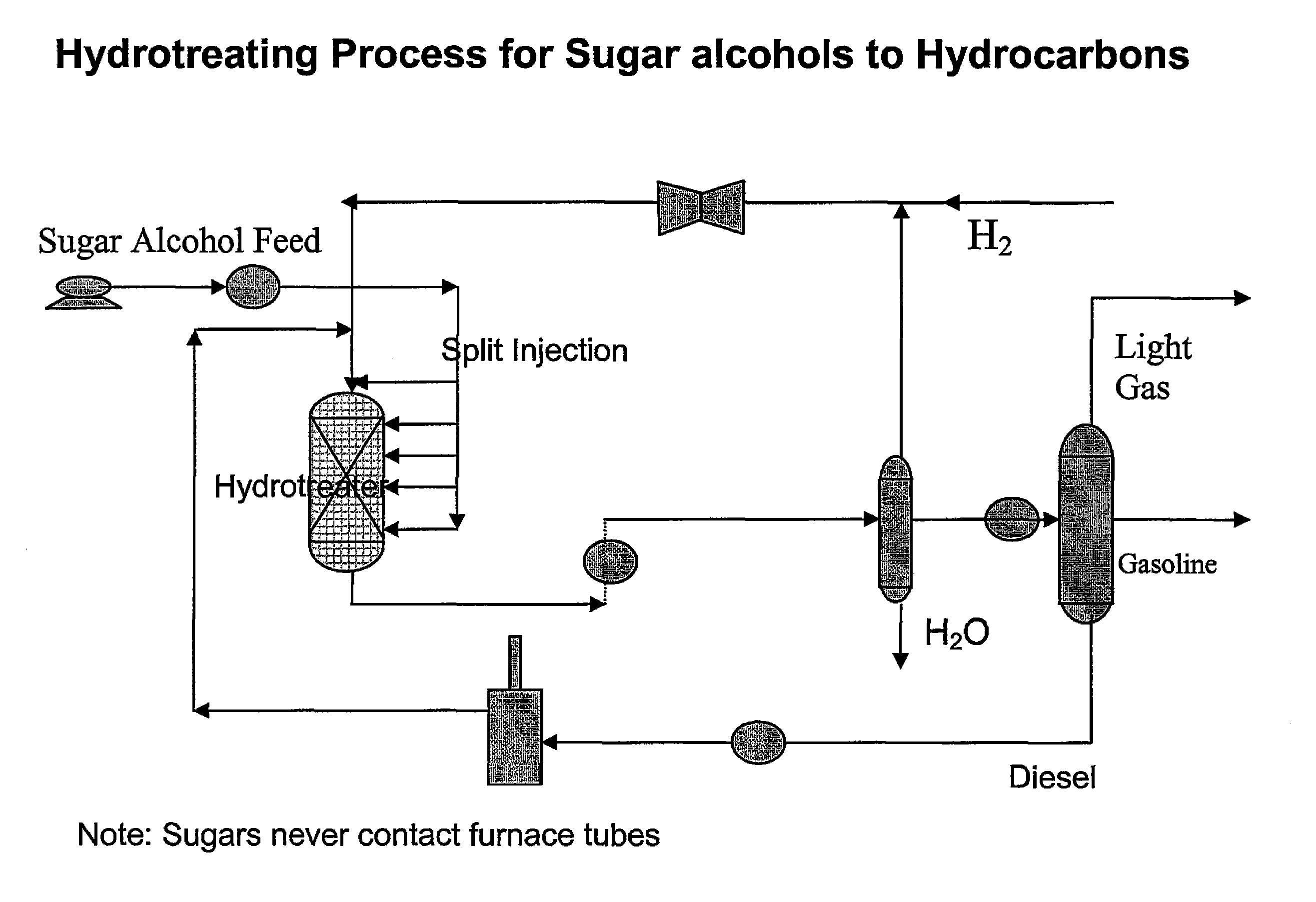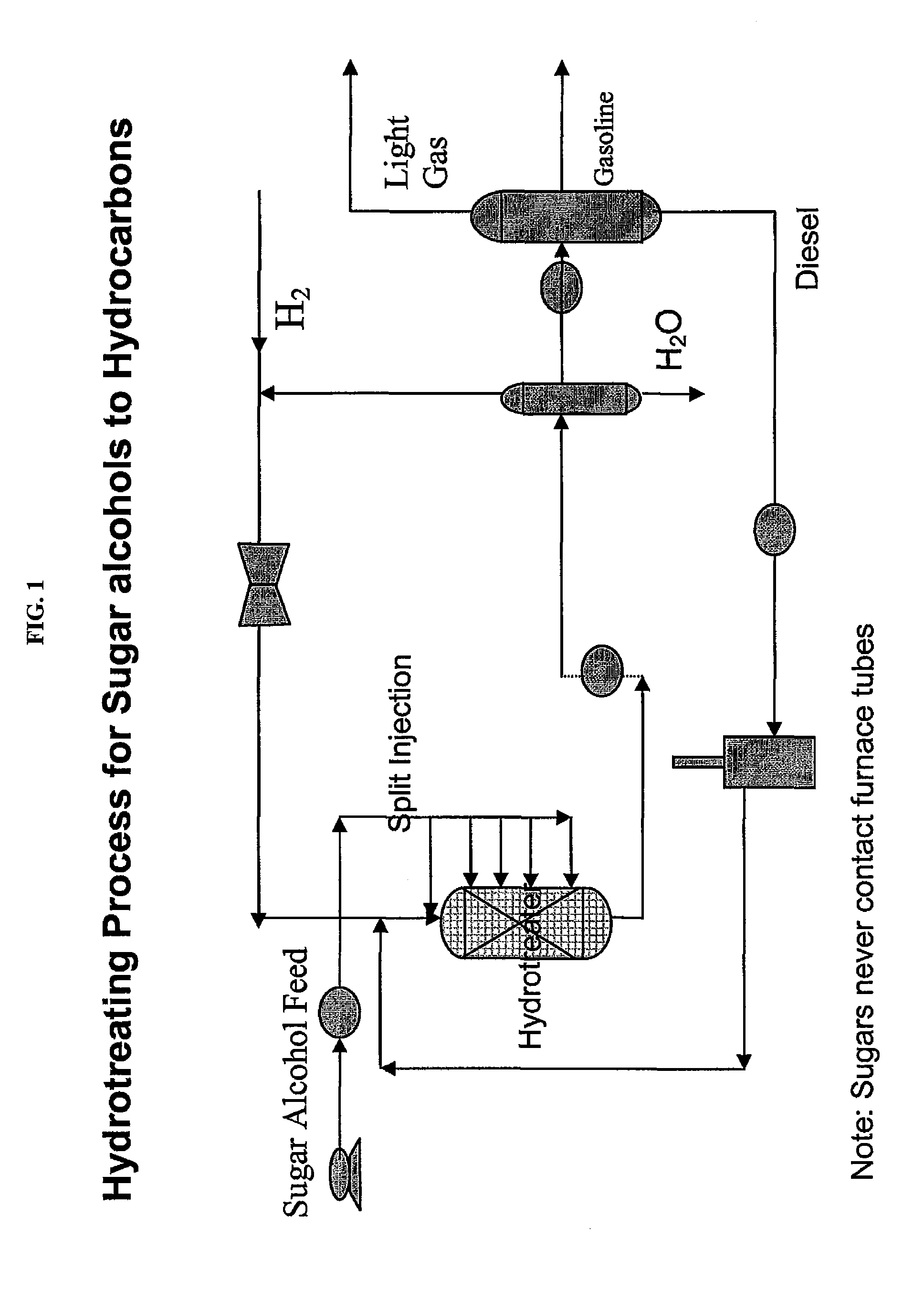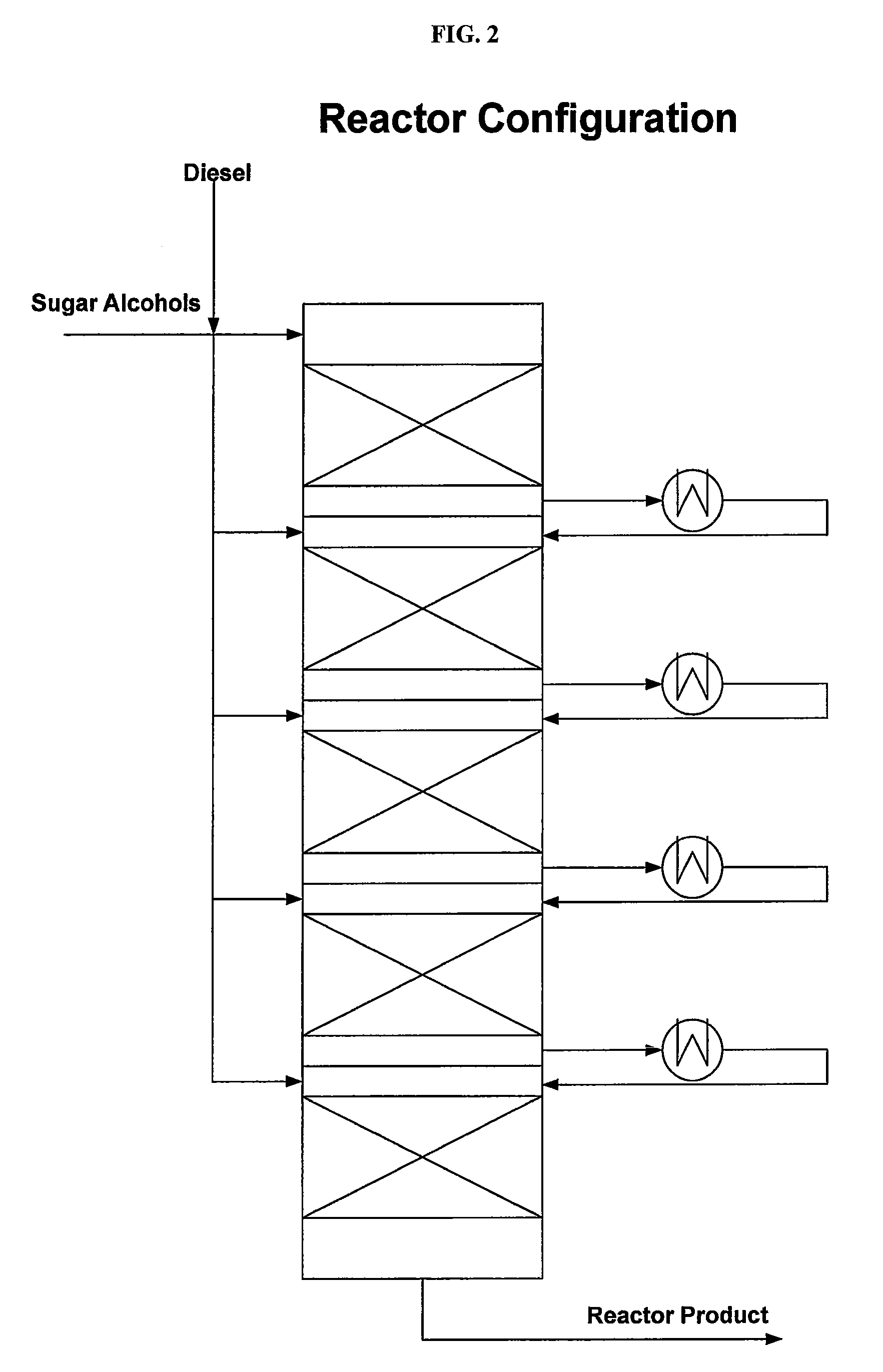Sugar alcohol split injection conversion
a technology of sugar alcohol and split injection, which is applied in the preparation of carbonyl compounds, biofuels, organic chemistry, etc., can solve the problems of system failure to address current problems, reaction speed is quickly fouled, and previous methods are limited by size, temperature, product and conversion rate limitations, etc., to reduce coke production, prevent damage to reactor catalysts, and mitigate potential coking problems
- Summary
- Abstract
- Description
- Claims
- Application Information
AI Technical Summary
Benefits of technology
Problems solved by technology
Method used
Image
Examples
example 1
Catalyst Bed Injection
[0033]Experimental results, see U.S. Provisional Application 61 / 236,347 which is incorporated herein in its entirety, suggested that hydrocarbon dilution including using diesel as a diluent reduces the sugar alcohol coking tendency (Table 3, determined based on the reactor pressure drop) while the increasing of the diesel to sugar alcohol ratio had very little impact on sugar alcohol conversion and product distribution (Table 2). In addition, it is observed that the majority of sorbitol to hydrocarbon conversion reaction is taking place at the top part of the catalyst bed. The sugar alcohol hydrotreating unit is operated by splitting sugar alcohol injection along the catalyst bed. By doing so, it keeps the high diesel to sorbitol dilution along the entire length of the catalyst bed while reducing the circulation of the diesel diluent. In addition, this will moderates the temperature of the bed for this highly exothermic reaction by 1) dilution of the diesel fee...
PUM
| Property | Measurement | Unit |
|---|---|---|
| temperature | aaaaa | aaaaa |
| temperature | aaaaa | aaaaa |
| temperature | aaaaa | aaaaa |
Abstract
Description
Claims
Application Information
 Login to View More
Login to View More - R&D
- Intellectual Property
- Life Sciences
- Materials
- Tech Scout
- Unparalleled Data Quality
- Higher Quality Content
- 60% Fewer Hallucinations
Browse by: Latest US Patents, China's latest patents, Technical Efficacy Thesaurus, Application Domain, Technology Topic, Popular Technical Reports.
© 2025 PatSnap. All rights reserved.Legal|Privacy policy|Modern Slavery Act Transparency Statement|Sitemap|About US| Contact US: help@patsnap.com



